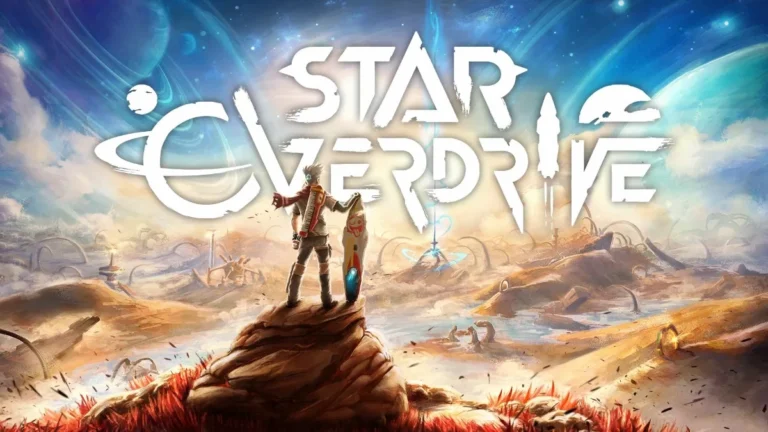Star Overdrive is yet another open-world action-adventure game making its way into the gaming scene. This indie title has been developed by Caracal Games, a small studio based in Italy and Canada, made up of just ten members.
The game is heavily inspired by The Legend of Zelda: Breath of the Wild, and this influence is clearly felt throughout the experience. However, Star Overdrive stands out with one key difference: it’s much faster.
Currently, Star Overdrive is a timed exclusive for the Nintendo Switch, with a demo version available. The game is also planned to release on Steam, though no official release date has been announced yet.
A Mysterious Beginning on the Planet Sebete
You play as Bios, the game’s protagonist, who finds himself stranded on a distant planet called Sebete after picking up a strange, weak signal. He didn’t land properly and is now stuck in an unfamiliar place. His mission? To find Nous, his missing lover who has mysteriously disappeared.
The game tries to deliver its story through various means. You can find tape recordings, revealing what happened to Nous, or photographs that offer extra clues.
However, the storytelling is often vague, and you’re not always sure why you’re doing certain quests or what new information you’ve gained. After finishing each part of a quest, you only get a hint about your next step, and that’s usually not enough. The game could have done a better job guiding players through its narrative.
Gameplay – Fast, Fun, but Not Flawless

In terms of gameplay, Star Overdrive performs fairly well. You have two main tools:
- The Kytar: a multi-purpose weapon used for both combat and activating abilities.
- The Hoverboard: a futuristic electric scooter used to travel across the open world.
Speed is a major theme in Star Overdrive, and that’s where the hoverboard really shines. The world is large and full of distant locations, so a fast travel method is essential. Performing tricks mid-air gives you boosts, and some gates in the world also provide extra speed bursts.
The hoverboard can be customized and upgraded. You can change its design and color, but more importantly, you’ll need to upgrade its performance to access new areas. As you move forward, stronger upgrades become necessary.
The hoverboard has six performance categories, including speed, gravity handling, and control. You can upgrade it by gathering in-game resources or finding new parts in treasure chests. Some parts grant special powers—for instance, one lets you ride on water, while another boosts your defensive abilities.
The board can also switch modes, such as defense mode for protection during combat, or attack mode to fight enemies. Its connection with Bios determines how effectively it supports you.
While using the hoverboard is exciting, it has its issues. In some areas, the required upgrade level becomes unreasonably high, forcing you to grind before continuing, which can slow down the fun.
Combat – Basic but Functional
Combat mainly revolves around the kytar and Bios’s powers. You can attack enemies, dodge hits (dash), and perform counterattacks. Bios also has various abilities that add some variety, though overall, fights tend to feel simple and repetitive.
Besides normal enemies, there are some larger boss-like creatures with nice designs, but the mechanics to beat them are quite repetitive, and they lose their appeal after a few encounters.
Abilities – Puzzle-Solving with a Twist
As you progress, Bios unlocks several powers, such as:
- Magnet-like object control (similar to Zelda’s Magnesis)
- Remote attacks and switch activation
- Jump pads for platforming
These abilities help in both combat and puzzles. The world includes puzzle areas called Mines, where solving challenges rewards you with Skill Points. In these areas, your abilities are key to success and bring a satisfying level of problem-solving to the game.
Technical Performance and Audio
Technically, the game runs smoothly on the Nintendo Switch, with only a few moments of minor frame drops. These are brief and don’t ruin the overall experience.
As for the soundtrack, it’s acceptable—not particularly memorable, but not bad either. The music fits the tone but doesn’t stand out.
Conclusion – A Fast but Flawed Adventure
Star Overdrive is a decent open-world game with both strengths and weaknesses. While its combat feels shallow, and the storytelling lacks clarity, it offers:
- A beautifully designed world
- An exciting hoverboard system
- Engaging puzzles and useful character abilities
These strengths make it worth trying, especially if you enjoy fast-paced adventure games inspired by Zelda but with their own twist. Just be prepared for some grinding and a bit of story confusion along the way.
